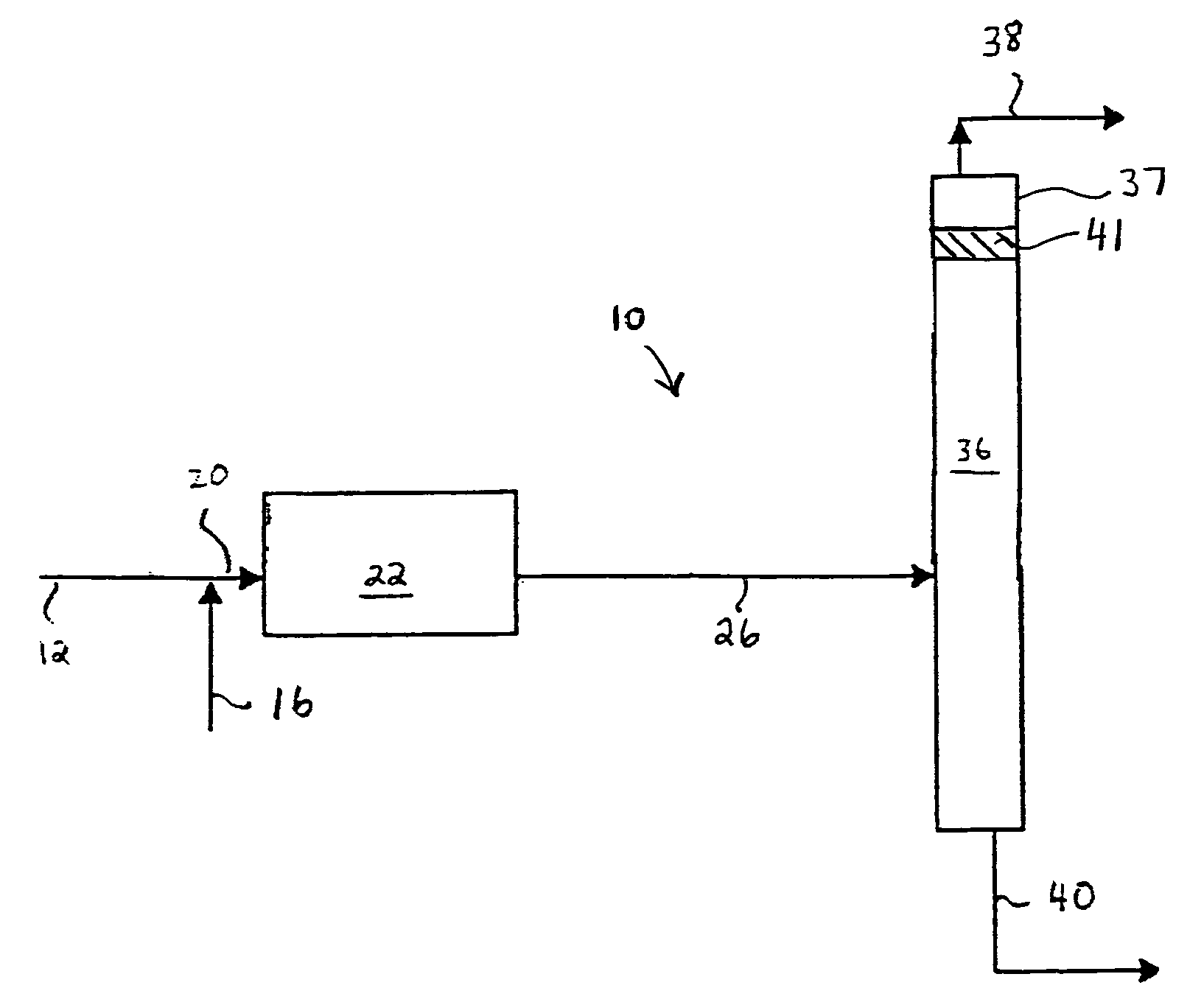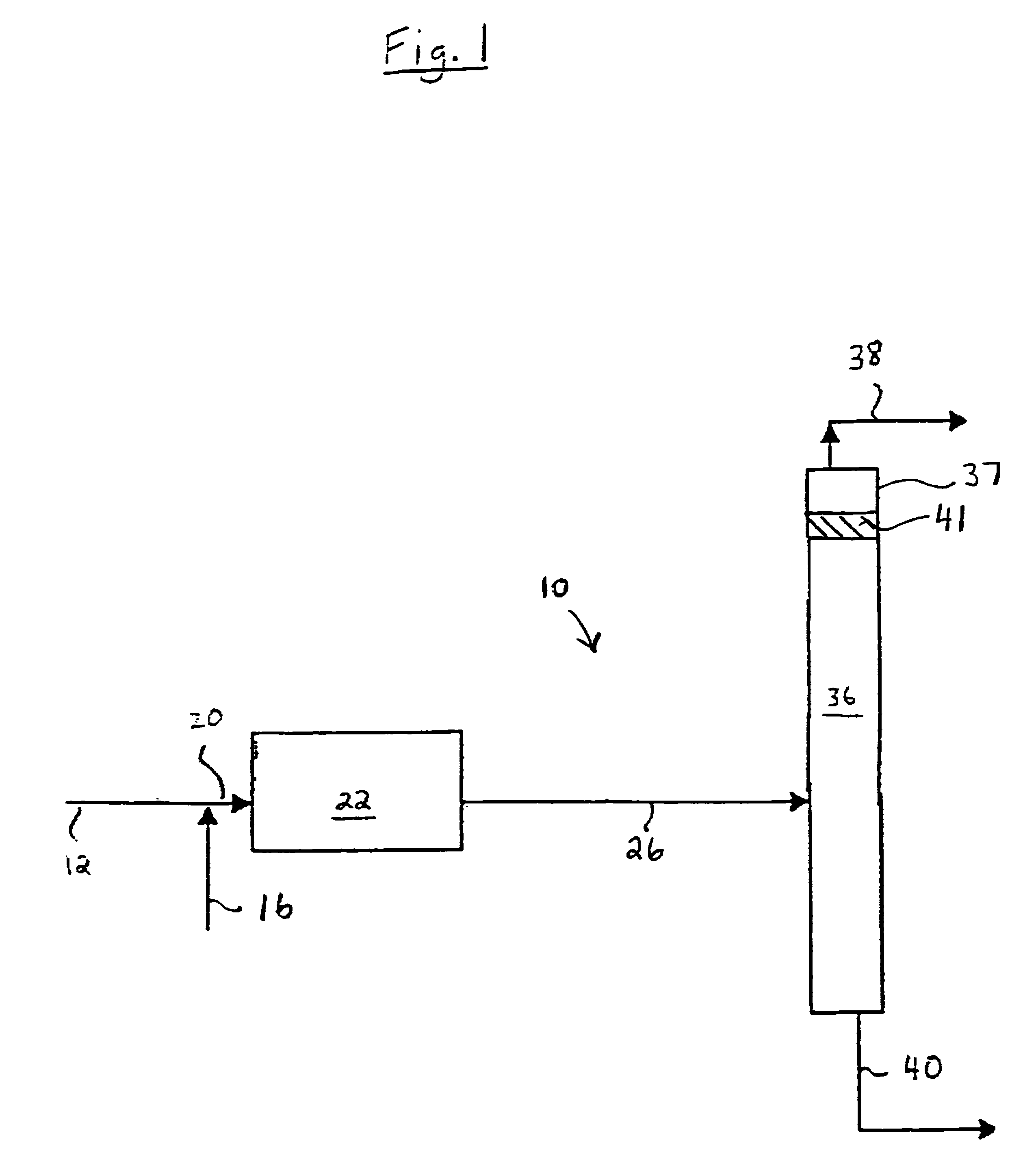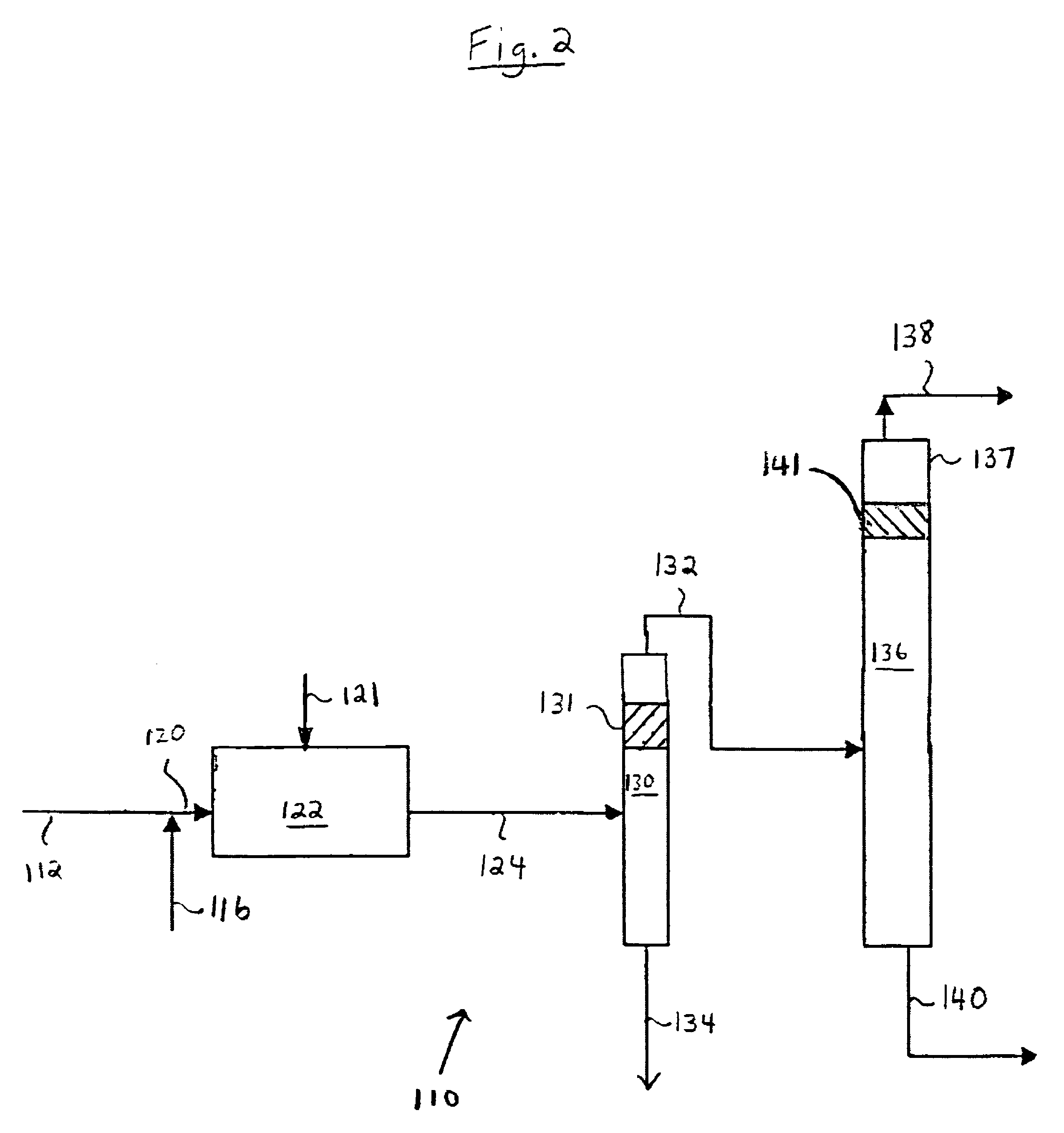Double bond hydroisomerization of butenes
a double bond, butene technology, applied in the direction of hydrocarbon preparation catalysts, sustainable manufacturing/processing, separation processes, etc., can solve the problems of n-loss, negative effect of reaction on the propylene selectivity of ethylenolysis reaction and undesirable, loss of olefins, etc., to increase the selectivity of 2-butene, less fouling of catalysts, and the effect of increasing the yield of 2-buten
- Summary
- Abstract
- Description
- Claims
- Application Information
AI Technical Summary
Benefits of technology
Problems solved by technology
Method used
Image
Examples
example 2
[0073]A sophisticated computerized simulation was run in which a feed stream having the same composition of the feed streams used in Comparative Example 1 was sent to a 10 ft L×4.5 ft ID fixed bed hydroisomerization unit. Following the fixed bed, the effluent flowed to a fractionation tower to separate the isobutylene and isobutane from the 2-butene and n-butane. No catalyst is employed in the fractionating tower. The tower following the fixed bed consisted of 94 theoretical stages with a reflux ratio of 4.5. The simulated reactor was a fixed bed with a single hydrogen feed (no CO) and had 6.7% 1-butene saturation as shown in FIG. 5. The reboiler and condenser duties were equivalent to those of CD-DeIB Tower 1A in Comparative Example 1 since they are set by the reflux ratio. The process resulted in a 65% conversion of 1-butene (Comparative Example 2). The results are shown on Table 3. The overall recovery of normal butenes (1-butene and 2-butene) is 90.3%. The principal loss of tota...
example 2a
Catalyst Stage Added to Deisobutylenizer; Single Feed of Hydrogen used in Hydroisomerization Reactor
[0074]The procedure of Comparative Example 2 was repeated with the exception that a single catalyst stage was added near the top of the fractionation tower, at stage 18. This resulted in an improvement in the % feed of n-butenes in the bottoms from 90.3% (Comparative Example 2) to 97.96% (Example 2A). In this example, the fixed bed hydroisomerization reactor using a single hydrogen feed (and no CO) was used to convert 66% of the l-butene to 2-butene (and n-butane). Following the fixed bed, the feedstock mixture consisted of 3521 lb / hr 1-butene, 29179 lb / hr 2-butene, and 1.2 lb / hr butadiene. By incorporating a single catalyst stage at the proper location within the tower, an additional 2602 lb / hr of 1-butene is converted. This raises the overall conversion to 91%. Further, given the composition of the feedstock entering the tower, there are favorable fractionation conditions that resul...
example 2b
Catalyst Stage Added to Deisobutylenizer; Split Feed of Hydrogen and CO used in Hydroisomerization Reactor
[0075]The procedure of Example 2A was repeated with the exception that a combined feed of hydrogen and CO was added at two different locations along the length of the hydroisomerization reactor, and the simulated reactor was a fixed bed using two hydrogen / CO feeds to realize 79% conversion in the fixed bed with 5.4% 1-butene saturation. This is Example 2B. The results are shown on Table 3 below.
[0076]
TABLE 3Example NumberComp. 22A2BH2 PP top bed—0.050.05Reflux Ratelb / hr400000400000400000Total Feed Ratelbs / hr886898868988689% Feed n-Buteneswt %90.3397.9698.2in Bottomsi-Butylene in Bottoms,wt %3.553.973.951,3 Butadiene in Bottomsppmw1010101-Butene in Distillatelb / hr27061911492-Butenes in Distillatelb / hr117129991-Butene in Bottomslb / hr7706834072-Butenes in Bottomslb / hr2844731005313561,3 Butadiene Conversionwt %999999Overall Conversion &Selectivity1-Butene inlb / hr1010910109101091-But...
PUM
| Property | Measurement | Unit |
|---|---|---|
| molar ratio | aaaaa | aaaaa |
| concentration | aaaaa | aaaaa |
| driving force | aaaaa | aaaaa |
Abstract
Description
Claims
Application Information
 Login to View More
Login to View More - R&D
- Intellectual Property
- Life Sciences
- Materials
- Tech Scout
- Unparalleled Data Quality
- Higher Quality Content
- 60% Fewer Hallucinations
Browse by: Latest US Patents, China's latest patents, Technical Efficacy Thesaurus, Application Domain, Technology Topic, Popular Technical Reports.
© 2025 PatSnap. All rights reserved.Legal|Privacy policy|Modern Slavery Act Transparency Statement|Sitemap|About US| Contact US: help@patsnap.com



